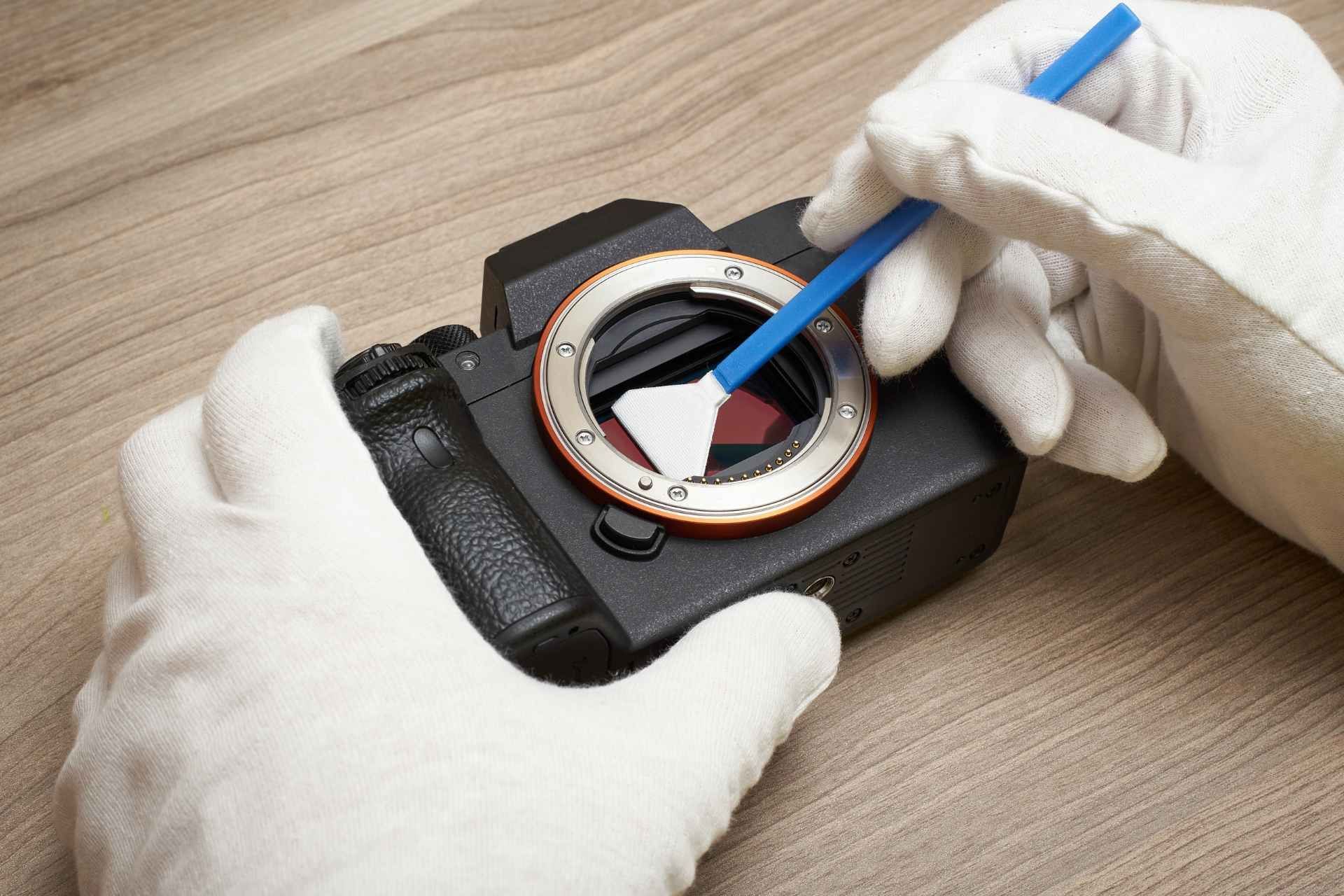Sensor Cleaning & Lens Calibration
Sensor Cleanings.
Are you noticing spots on your photographs in the same location (the size and darkness of the spots can vary depending on aperture)? Sensor dust can never be seen through the viewfinder, it only shows up in images. Even then, you might need to zoom in to 100% to see it. This is typically dust on the sensor and we can clean the sensor on any DSLR or Mirrorless Camera.
If you're using an SLR camera, you'll eventually encounter spots due to a dirty camera sensor. If it hasn't happened yet, don't worry — it will. When it does, you'll need to know if what you're seeing is indeed from sensor dust, or is instead the result of a dirty viewfinder, mirror or lens.

An easy test to see if you have a dirty sensor:
• Set camera to Aperture Priority Mode
• Set your ISO to 100 or 200.
• Turn off Auto ISO.
• Set camera to manual focus and move focus to infinity.
• Set your aperture to the largest number (F/16 or F/22 is normally the minimum on most lenses.)
• Take a photo of a solid white area or a bright light source
If you are outside, point your camera up at the clear blue sky and take a picture. If you are indoors, find plain white paper, zoom in all the way so that the paper fits the whole frame, then make sure that the lens is completely out of focus and take a picture. If you are in front of a computer, open up a text editor such as Notepad, maximize it to the screen and then get as close to the monitor as possible so that only the white color is visible in the frame. Make sure that your focus is way off (completely out of focus) – that way, only dust particles will be visible.
After taking these steps, if you have debris on your camera sensor, it should show up on the test photo. You may need to zoom in on the image and scroll from left to right and top to bottom. If you do see dark spots, it is time for a sensor cleaning.
Some people clean their own sensors, and if not done right, can actually make the sensor dirtier - and if not careful, you can cause damage to the camera sensor like scratching, or cleaning fluid can leak into the camera.
The Camera Company professional Sensor Cleaning
We offer professional sensor cleaning on all DSLR models from all manufacturers, both APS-C size and full frame. The Camera will need to be left at the store and can take up to 48 hours to complete. We clean more than the sensor.
- We clean the sensor
- We clean the viewfinder
- We clean the LCD
- We clean the exterior of the camera, including accessory ports, battery compartment, and memory card compartment
- We clean the exterior of the lens
- We clean the lens contacts
- We clean the front and rear lens element
- We clean the filter
| Sensor Size | Price |
|---|---|
| APS-C or Full-Frame | $59.99 |
Lens Calibration
Do you feel like your gear is letting you down by missing focus and not getting you tack sharp images? Did you buy an expensive lens but still not impressed by its focus accuracy?
What is Lens Calibration?
For starters, we are not making any adjustments to the lens. We are making micro-adjustments to the DSLR camera body. Once the calibration is complete, the camera recognizes the lens and uses the focus settings that we have entered into the camera body for that particular lens. If several lenses have been calibrated, the camera remembers the settings for each lens.
How do I know if my lens needs calibrating?
While the manufacturers do calibrate the cameras and lenses to give shape images, some variations and failures can occur. Even the highest-quality DSLR photo equipment is not manufactured to identical specifications.
Take a close look at some images that you feel are not sharp and examine them. How is the focus off? Is the lens consistently focusing a bit in front or behind your focus point?
What is most common is back-focus. Portrait photographers will often notice back-focus. An example is that you focus on the subject's eye, and when you review the images, you see that the eye is not sharp and that the sharp focus is on the subject's ear. The sharpness is behind your intended focus point. This is back-focus. A camera could front-focus, but this is less common. With an older 10 or 12-megapixel camera, this error was not as noticeable as it is with today's 24-megapixel and higher cameras. It is also not noticeable when shooting landscapes. It rears its head when shooting portraits and close-ups.
Mirrorless cameras and lenses do not need to be calibrated.
Once calibrated, we suggest re-calibrate a particular lens/camera combination every 6-12 months, depending on how much you use your camera. Camera and lens parts wear, and if used heavily, calibrating more often can be useful.
If you have questions about calibration, please feel free to stop in or call one of our stores.
| Lens Calibration | Price |
|---|---|
| Per Lens/body | $39.99 |
Visit us in store
Have questions? We're happy to help.

